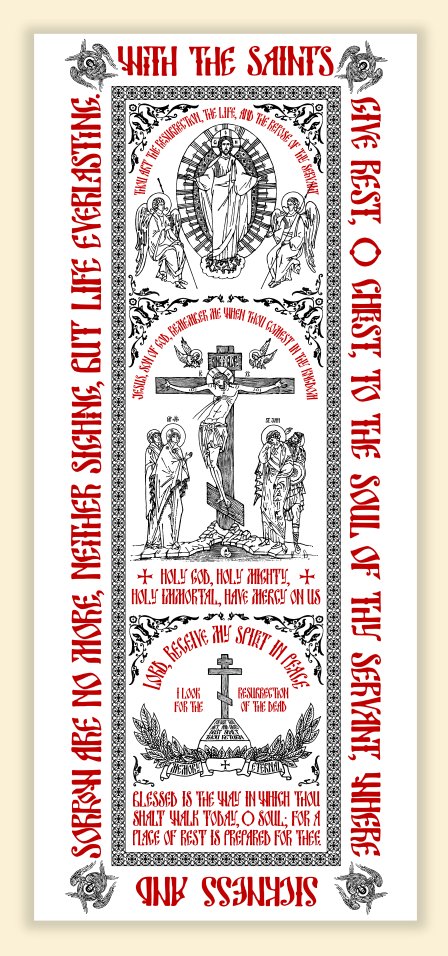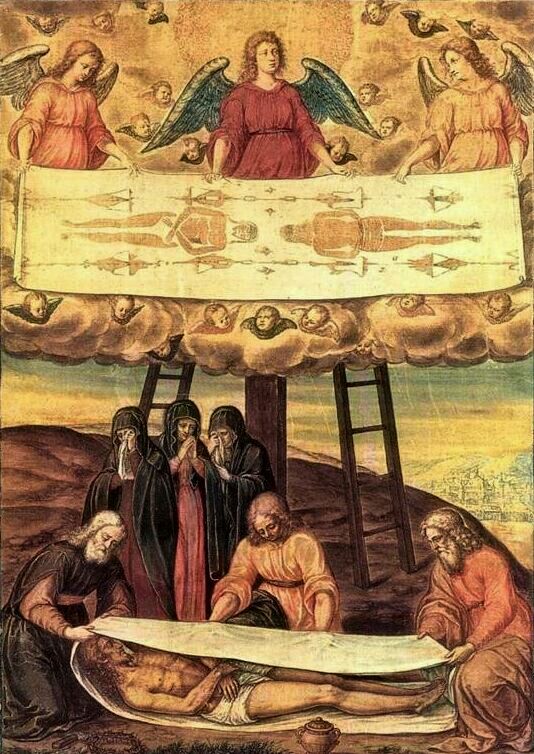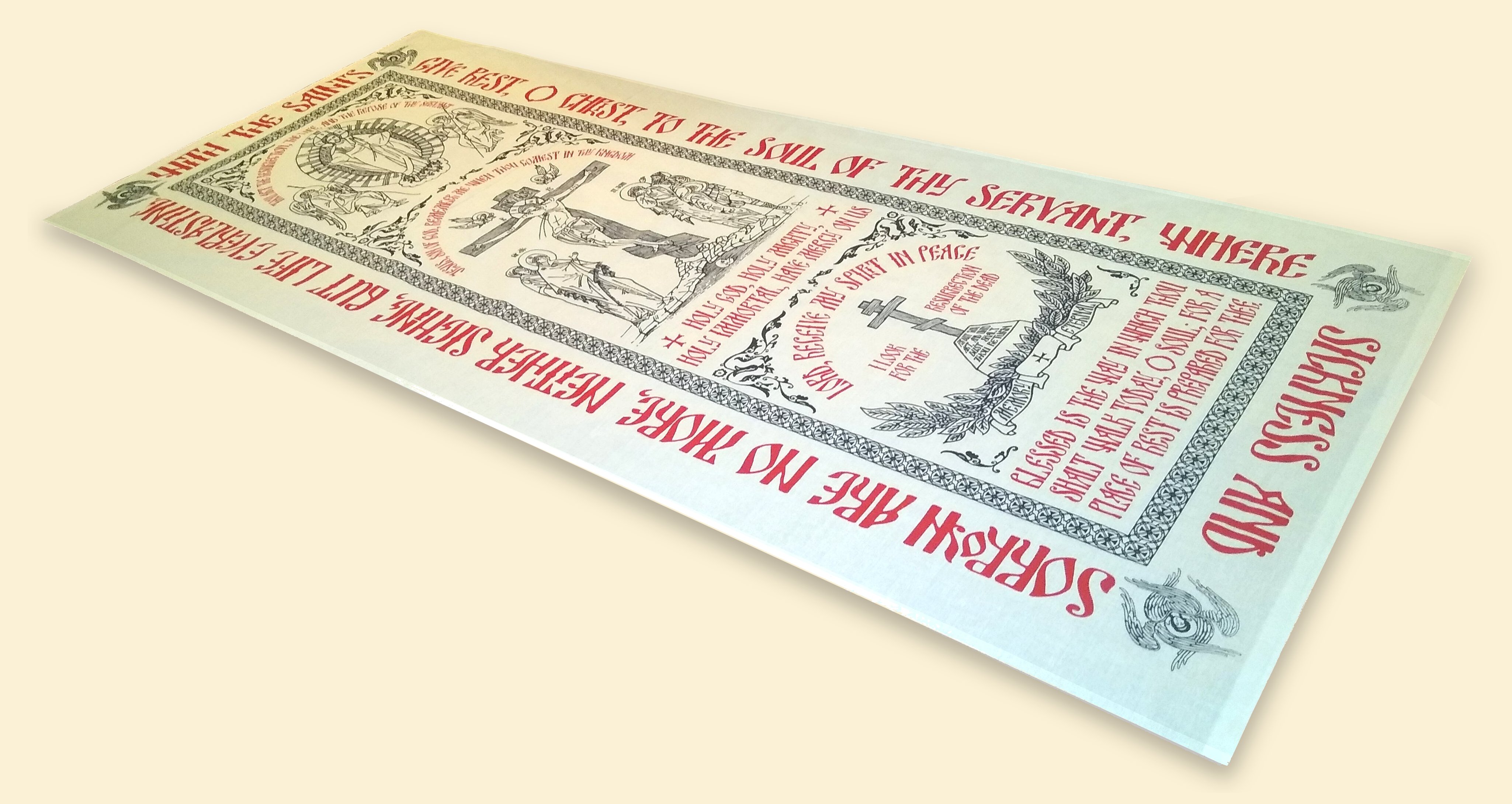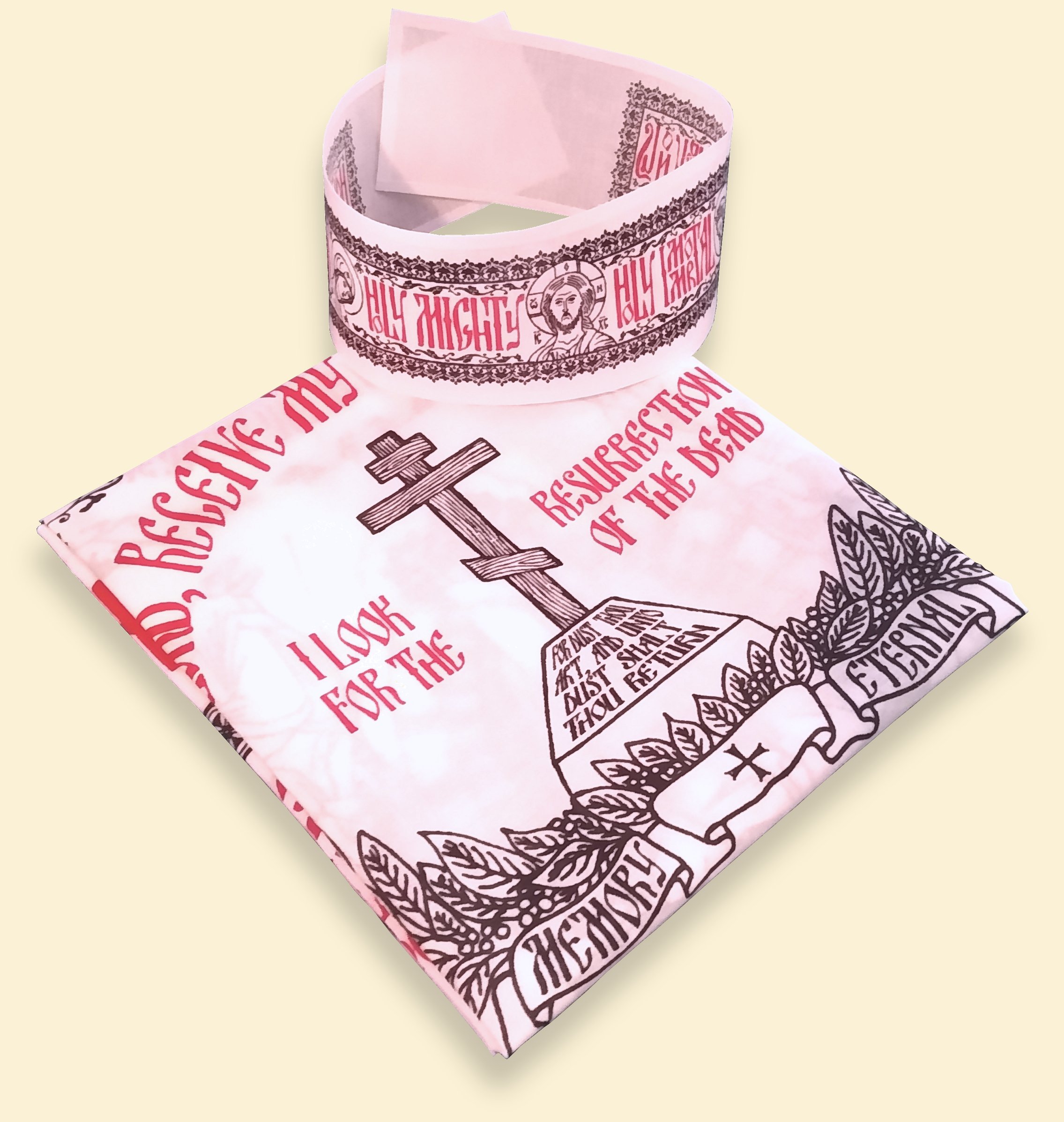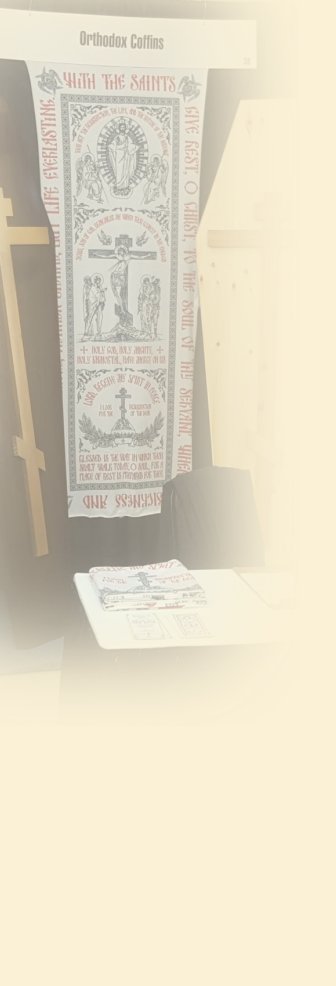In more recent times, a custom developed that this burial shroud be imprinted with iconographic images of Christ's Crucifixion and Resurrection, as well as Scriptural verses and those from the church services. This is consistent in many different Orthodox ethnic traditions. Until recently, in America the majority of these shrouds have been imported, and are inscribed in a language that most English-speaking Americans cannot easily read. Although there are some options available in America that are in English, we resolved to design and produce a fuller and more complete design. Much time, consideration, and expense has been invested into what we believe are the highest quality Orthodox burial shrouds available today.
Our shroud design is not a new innovative style, but a refinement of conventional Orthodox shrouds. The icons and their position have been retained, but the line-drawings have been updated. The text and verses that commemorate the departed with the death and resurrection of Christ have been translated from Slavonic to liturgical English, and are set apart from the icons by emphasizing them in red - a feature unique to any other available burial shroud. Finally, a manuscript-style border and ornaments fill out the remaining space.
Similarly, the headband (crown or chaplet) draws on the traditional form. It incorporates new icons of the Deesis - Christ, the Theotokos, and St. John the Forerunner. The Trisagion text is again highlighted in red, and is surrounded with border ornamentation. The headband symbolizes the wreath or crown of victory bestowed on us after having "fought the good fight" as did St. Paul (II Timothy 4:7). Also, as is written in Revelation 2:10, "Fear none of those things which thou shalt suffer... be thou faithful unto death, and I will give thee a crown of life."¹
The shrouds overall measurement is 28½" x 68", with the interior print at 23" x 65" - the side edges having a slightly wider margin to tuck in the sides. Both the shroud and headband are printed on a linen-like white woven fabric. The printing takes place at a local rotary screen printing mill in the long-standing textile tradition of the North Carolina Piedmont.
¹ taken from "Guidelines for Christian Burial", SS. Peter and Paul Orthodox Church, Manville, NJ https://ssppoc.org/files/documents/Guidelines-for-Christian-Burial.pdf
² taken from "A Manual of the Orthodox Church's Divine Services," p.153-156, 1975, Jordanville' NY.
NOTE TO CUSTOMERS:
October 2020
After over two years of production and material search, the shrouds are finally available for purchase. If you are interested, please e-mail us at dkowalcheck@orthodox-coffins.com or call/text (336) 978-5385 and we will e-mail you the secure online payment instructions. We accept all of the above credit cards, a secure bank account transfer, Zelle, and Venmo.
The burial shrouds are $100 and include the matching cloth headband (chaplet, crown). We also provide discounts for bulk orders. Please contact us to inquire.
AN ANCIENT CUSTOM IN THE NEW WORLD
Since ancient times, civilizations throughout the world developed particular burial customs unique to their culture. Ancient Judaism in particular, placed a special emphasis on the preparation of the deceased, where great care and respect were to be given to the departed. The body was to be washed, anointed, wrapped in white cloths, and bound. On Great and Holy Friday and Saturday, Orthodox Christian faithful sing the Troparion:
Naturally, early Christians inherited the customs of their Jewish predecessors; and the practice of washing and wrapping the body in winding cloths continued. Throughout the subsequent centuries of Christian history, these standards endured. Many centuries later when the use of burial coffins became normative, a simpler cover took the place of the winding cloths. No longer needed for practical reasons, this burial shroud was more symbolic in nature. It came to be understood that the shroud represented that both the grace of God and the prayers of the Church cover the departed one.¹ It also became a sign of the promise which the deceased gave at baptism to lead a life of purity and holiness.²
"The noble Joseph, when he had taken Thy most pure body from the tree, wrapped it in fine linen and anointed it with spices and placed it in a new tomb."


